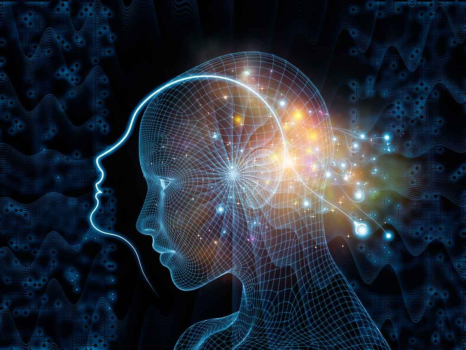ESPAÑOL

«Según un muy utilizado pseudorrazonamiento, el que juntando tres patas carentes de por sí de equilibrio pueda hacer emerger de repente de ellas un equilibrio que ninguna de las tres por separado poseía se explicaría mejor porque hay un elemento inmaterial que hace a las tres patas estables.
Pero ¿se explicaría mejor realmente así o por una propiedad que necesariamente forma parte del momento en que se constituyen determinados sistemas materiales?
Hago la comparación para que se pueda ver de un modo simple y desnudo la inconsistencia evidente de quienes pretenden insinuar que existe algo inmaterial sólo porque no comprenden cómo funciona la materia.»
[Agustín Barahona]
INTRODUCCIÓN
El debate sobre si los átomos inertes pueden generar conciencia resulta apasionante. En este pequeño artículo exploraremos un argumento común. Vincula esta cuestión con la estabilidad de un trípode. Analizaremos su validez.
PLANTEAMIENTO
En primer lugar, se argumenta que los átomos al ser inertes no pueden generar conciencia. ¿Qué tan efectivo es este razonamiento? Consideremos una comparación con las patas de un trípode. Estas patas carecen de equilibrio individualmente. Pero ¿depende de un componente inmaterial el que emerja equilibrio al unirlas?
En segundo lugar, esta analogía resalta la contradicción en la afirmación de que la conciencia surge de lo inmaterial, basándose en una falta de comprensión de la materia.
Además, esta analogía simplifica el asunto. La noción de que los átomos inertes no pueden generar conciencia surge de una visión limitada. Similar a no percibir que la unidad básica de la vida, la célula, está compuesta por elementos no-vivos.
Finalmente, la generación de conciencia es un proceso complejo. Involucra interacciones intrincadas de sistemas bioquímicos cerebrales. ¿Es realmente un obstáculo insuperable que lo inerte sea inconsciente para este proceso?
CONCLUSIÓN
En resumen, el argumento que relaciona lo inerte atómico con la incapacidad de generar conciencia se fundamenta en una falsa analogía.
La comprensión actual de la conciencia involucra diversas disciplinas científicas. No puede reducirse a un único ejemplo con, como mínimo, una falacia incorporada.
La exploración de la relación entre la materia y la conciencia sigue siendo un tema en constante evolución que requiere un análisis meticuloso desde múltiples perspectivas científicas.
Consiguientemente, explorar esta temática implica profundizar en investigaciones actuales en neurociencia y física cuántica. Ofrecen perspectivas fascinantes sobre la interconexión materia/mente.»
[Agustín Barahona]
ENGLISH

«According to a frequently used pseudo-argument, the idea that by combining three legs that lack balance on their own, an equilibrium that none of the three possessed individually suddenly emerges, could be better explained by the presence of an immaterial element that stabilizes the three legs.
But would it actually be better explained this way, or by a property that necessarily becomes part of the moment when certain material systems are constituted?
I draw this comparison so that the evident inconsistency of those who insinuate the existence of something immaterial solely because they don’t understand how matter works can be seen in a simple and bare manner.»
[Agustín Barahona]
INTRODUCTION
«The debate about whether inert atoms can generate consciousness is captivating. In this short article, we will explore a common argument that links this question to the stability of a tripod. We will analyze its validity.
PROPOSITION
Firstly, it is argued that inert atoms cannot generate consciousness because of their inert nature. How effective is this reasoning? Let’s consider a comparison with the legs of a tripod. These legs lack balance individually. But does the emergence of balance when they are brought together depend on an non-material component?
Secondly, this analogy highlights the contradiction in the assertion that consciousness arises from the immaterial, based on a lack of understanding of matter.
Furthermore, this analogy simplifies the issue. The notion that inert atoms cannot generate consciousness arises from a limited perspective, similar to not recognizing that the basic unit of life, the cell, is composed of non-living elements.
Lastly, the generation of consciousness is a complex process involving intricate interactions of brain biochemical systems. Is the inertness of matter truly an insurmountable obstacle to this process?
CONCLUSION
In summary, the argument connecting atomic inertness to the incapacity to generate consciousness is grounded in a false analogy.
The current understanding of consciousness involves various scientific disciplines. It cannot be reduced to a single example with, at the very least, an embedded fallacy .
The exploration of the relationship between matter and consciousness remains a continually evolving topic that requires meticulous analysis from multiple scientific perspectives.
Consequently, delving into this theme implies delving into ongoing research in neuroscience and quantum physics. These fields offer fascinating insights into the interconnectedness of matter and mind.»
[Agustín Barahona]
Tienes que Iniciar Sesión